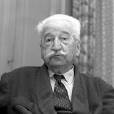法證之父艾德蒙·羅卡
基本介紹
- 本名:Edmond Locard
- 別稱:艾德蒙·羅卡
- 出生地:法國
- 主要成就:建立了一套痕跡學理論
- 性別:男
基本信息,艾德蒙·羅卡,羅卡定律,
基本信息
凡兩個物體接觸,會產生轉移現象。即會帶走一些東西,亦會留下一些東西。
——法證之父艾德蒙·羅卡
艾德蒙·羅卡
1910 年,法國警官艾德蒙羅卡建立了一套黃金定律,那就是人類無論做過何種接觸,一定會留下微跡證。簡而言之“凡走過必留下痕跡”。他的報告奠定了現代刑事鑑識科學的基石。
利用羅卡的原理,刑事鑑識人員分析犯罪現場所發現的纖維,就可查出大量線索,如衣服款式、衣服售出地、甚至連織品製造商都可以查出來。藉由分析微小的纖維,微跡證鑑識員能夠確切指出嫌犯曾身處現場,進而定罪嫌犯。
羅卡定律
羅卡定律:凡兩個物體接觸,會產生轉移現象。即會帶走一些東西,亦會留下一些東西。
羅卡定律原述:
From Wikipedia, the free encyclopedia
The Locard exchange principle, also known as Locard's theory, was postulated by 20th century forensic scientist Edmond Locard.
Locard was the director of the very first crime laboratory in existence, located in Lyon, France. Locard's exchange principle states that "with contact between two items, there will be an exchange" (Thornton, 1997).
Essentially Locard's principle is applied to crime scenes in which the perpetrator(s) of a crime comes into contact with the scene, so he will both bring something into the scene and leave with something from the scene. Every contact leaves a trace.
“Wherever he steps, whatever he touches, whatever he leaves, even unconsciously, will serve as a silent witness against him. Not only his fingerprints or his footprints, but his hair, the fibers from his clothes, the glass he breaks, the tool mark he leaves, the paint he scratches, the blood or semen he deposits or collects. All of these and more, bear mute witness against him. This is evidence that does not forget. It is not confused by the excitement of the moment. It is not absent because human witnesses are. It is factual evidence. Physical evidence cannot be wrong, it cannot perjure itself, it cannot be wholly absent. Only human failure to find it, study and understand it, can diminish its value”
—Professor Edmond Locard
簡單說來就是,只要兩個人曾經接觸過,其中一個人身上就會有一些東西跑到另一人身上,反之亦然。 也許是塵土、血液、皮膚細胞、污泥、纖維或金屬碎屑。

